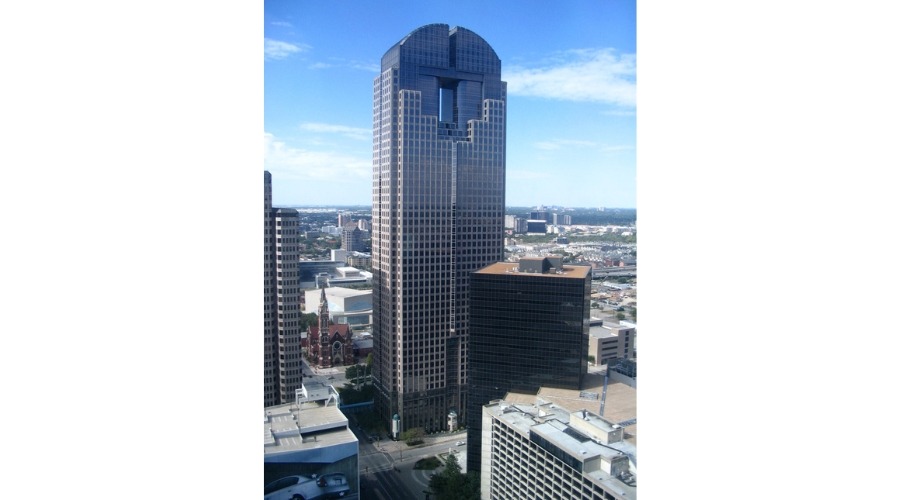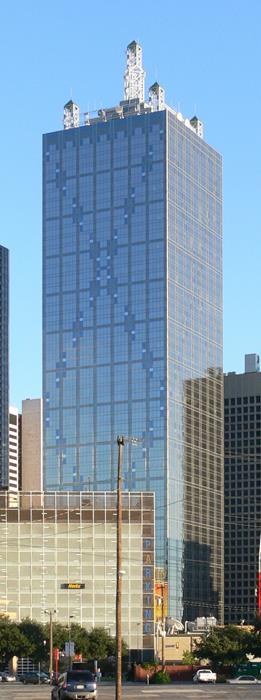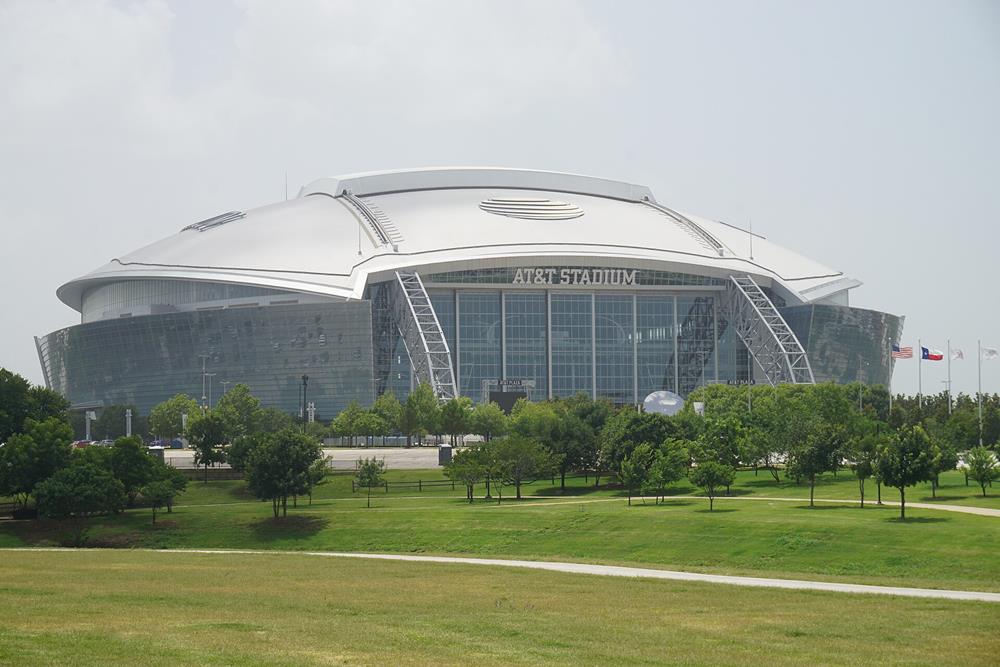DFW’s Largest Buildings: Skyline Icons You’ll Love

Dallas–Fort Worth stacks up some of Texas's most commanding architecture. You'll marvel at Bank of America Plaza's emerald outline, trace the rise of skyline-defining towers from the 1970s–80s boom, and step inside mega-venues whose size redefines "Texas-sized."
From Renaissance Tower and Comerica Bank Tower to Fort Worth's Burnett Plaza, these giants reveal the Metroplex's ambition in steel, stone, and glass. Explore this vertical tapestry to experience DFW's biggest buildings—by height, volume, and cultural impact.
Iconic Dallas Skyscrapers: From Bank of America Plaza to Downtown Vistas
https://www.youtube.com/watch?v=8z9lAFyNVfc
Magnificence defines Dallas's skyline, with Bank of America Plaza standing as its undisputed crown jewel. Rising 921 feet over 72 stories, this late-modernist landmark anchors downtown with its famous green lighting and nearly two million square feet of office space. You won't find a public observation deck here, but its presence frames every view of the city.
Just steps away, the Renaissance Tower climbs to 886 feet (with twin broadcast masts) across 56 floors, while the Comerica Bank Tower tops out at 787 feet over 60 stories—both pillars of Main Street's urban canyon.
Nearby, JPMorgan Chase (Dallas Arts Tower) reaches 738 feet with a dramatic "sky window," and Fountain Place cuts a crystalline profile at 720 feet, its plaza fountains softening the hard edges of downtown.
Building History Comes Alive: Booms, Rebrands, and Reinvention

While today's glow is unmistakably modern, Dallas's tallest tell a story of energy booms and bold design bets. Renaissance Tower debuted in 1974 as a sleek box before its 1980s makeover crowned it with masts, briefly returning it to the top tier of the skyline race.
Santander Tower (formerly Thanksgiving Tower) opened in 1982 at 646 feet and remains a workhorse of downtown, evolving with new uses and amenities as the city reinvents its core. Across decades, these towers reflect Dallas's habit of polishing icons rather than tearing them down.
Fort Worth's story parallels the boom: Burnett Plaza seized the title in 1983 at 567 feet and still reigns, joined by the Bank of America Tower (547 feet) and 777 Main (525 feet), a trio that signals Cowtown's quiet, enduring verticality.
Green Design & Urban Oases: How the Giants Breathe
Nature's tranquility finds a foothold among the glass and granite. Fountain Place integrates water, shade, and hardscape to create a breezy microclimate at its base, while Trammell Crow Center pairs 50 stories of office space with arts-district walkability, courtyards, and nearby cultural lawns. Even when you're flanked by towers, these plazas and pocket greens make the vertical city feel livable at street level.
Look for designs that balance performance and presence—granite cladding that tempers sun, recessed plazas that invite pedestrians, and lobbies that double as urban living rooms. When big buildings add breathable edges, the whole district wins.
Mega-Venues & Engineering Feats: Stadium Scale in the Metroplex
Passion erupts inside AT&T Stadium, a supersized building where engineering and spectacle meet in Arlington. The retractable-roof colossus seats 80,000 (expandable to about 100,000), spans roughly 3 million square feet, and hangs a center-mounted HD board once billed as the world's largest—numbers that make it one of DFW's most voluminous indoor spaces.
Daily tours spotlight not just gridiron lore but a serious contemporary art collection threaded through concourses and clubs.
On event days, the atmosphere transforms as tens of thousands stream under those soaring arches—proof that "largest" in DFW isn't only about height; it's about sheer scale and unforgettable experience.
Cultural Immersion: Big Buildings of Art, History, and Learning

Beyond offices and arenas, DFW's cultural heavyweights live in architecturally significant structures. You'll discover masterpieces at Fort Worth's Kimbell Art Museum, minimalist serenity at the Modern Art Museum of Fort Worth, and a striking concrete-and-glass cube at the Perot Museum of Nature and Science, whose design by Thom Mayne has become a modern icon.
These are not the tallest, but their generous volumes and bold forms make them essential stops in the "largest" conversation by footprint, presence, and influence.
Together, they demonstrate how large-scale buildings can be both magnets for crowds and quiet homes for contemplation—cathedrals for art, science, and civic memory.
Family Adventures: Big Views and Sky-High Fun
View this post on Instagram
When you're exploring with kids, DFW's big-building experiences are wonderfully hands-on. Reunion Tower's GeO-Deck lifts you 470 feet for sweeping views and interactive displays, turning the skyline itself into a learning lab. At the Perot Museum, the building is half the adventure—escalators in a glass tube and galleries stacked like layers of rock make the architecture part of the lesson.
Round out the day inside another cavernous favorite: the Galleria Dallas atrium, where a multi-level mall wraps around an ice rink beneath a glass-vaulted ceiling—proof that DFW does "indoors" on a grand scale, too.
Uniquely DFW: Unexpected Giants and Local Favorites
Where can you discover the soul of the Metroplex beyond the tallest spires? Start with workhorse towers like Santander Tower and Trammell Crow Center, whose lobbies, art, and streetfronts keep downtown humming from dawn to dusk. Step across the county line to Fort Worth's 777 Main and Bank of America Tower, where big-floorplate offices and skyline clubs anchor Sundance Square's nightlife.
And for a perspective flip, cap your evening back under Bank of America Plaza's neon glow—DFW's tallest beacon, lighting the city's edges in unmistakable green.



